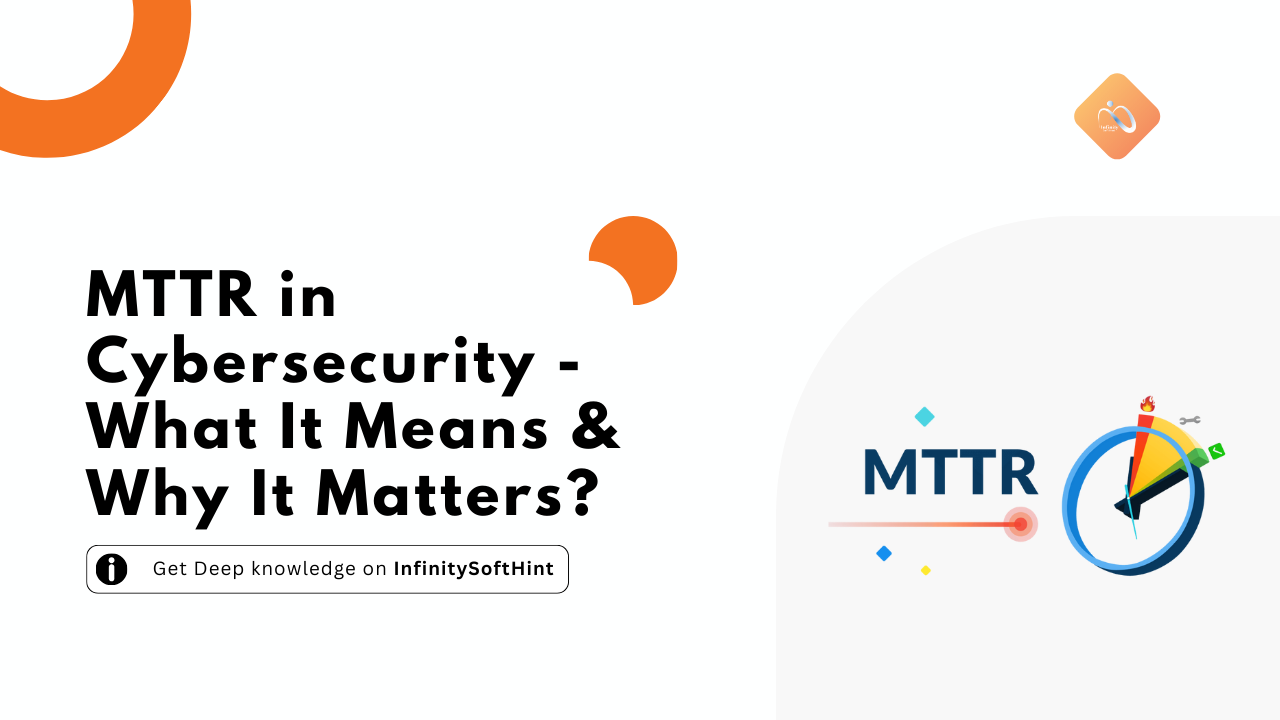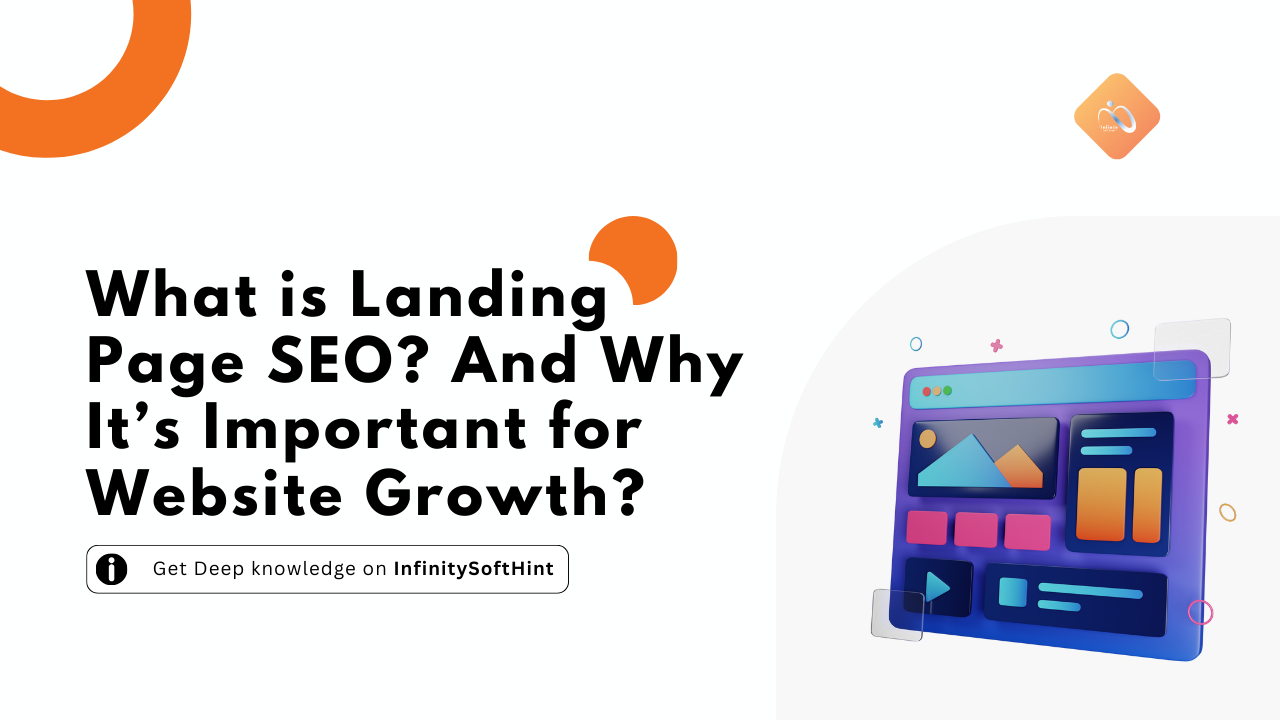A website owner struggled to improve his website’s ranking by incorporating different keywords, but it failed to yield any appreciable results; however, when he focused on high-quality content, it acted as a magnet and attracted higher rankings and organic visitors. Write content that provides clear information, engages the audience, and is fully SEO-optimized so search engines can understand it.
The well-researched, engaging, and valuable content that meets user intent has a higher chance of ranking higher than content that does not focus on users. High-quality content lowers the bounce rate, increases the dwell time, and earns natural backlinks. Keywords work for search engines, but quality content is for users.
In this article, I’ll explore how high-quality content ranks high on Google and attracts visitors. Give higher strategies for building quality content and learn the key factors to make human-written content. You also learn how Google’s latest updates emphasize quality over quantity. Be with us, and I’ll provide high-quality writing tips that help you write and craft content that adds value to the audience.
Understanding Quality Content
In the ever-changing era of SEO, quality content is a significant pillar for ranking a website. This content is built from proper research, incorporates keywords, and provides value to the user. Quality content is written according to audience preferences, which means it gives solutions on one page, so users don’t have to search again for more information about it.
Importance of Search Engine Rankings
- High-quality content extends client interaction time on pages, decreasing website visitor rates while increasing looking time.
- Both backlinks and shares increase authority levels because informative content that undergoes proper research can earn those metrics.
- E-E-A-T documents (experience, expertise, authoritativeness, and trustworthiness) provide Google with criteria to enhance search engine results page positions.
- Content that receives quality treatment leads readers to trust the content enough to execute desired actions (subscribe, purchase, and so forth).
Google’s Perspective on High-Quality Content
- The Helpful Content Update from Google identifies useful information that combines reliability with people-first content as its preferred content.
- The E-E-A-T guidelines from Google will help you create content that qualifies for high-ranking positions.
- Your content should always be of premium quality since AI-spammed material can result in ranking penalties from Google algorithms.
What Makes Good Content?
Everyone says, “Content is king” because of relevance, conciseness, readability, and uniqueness. There is a combination of strategy, creativity, and understanding of audience needs. Here are the essential elements of good content.
1. Concise and Grammatical Error-Free
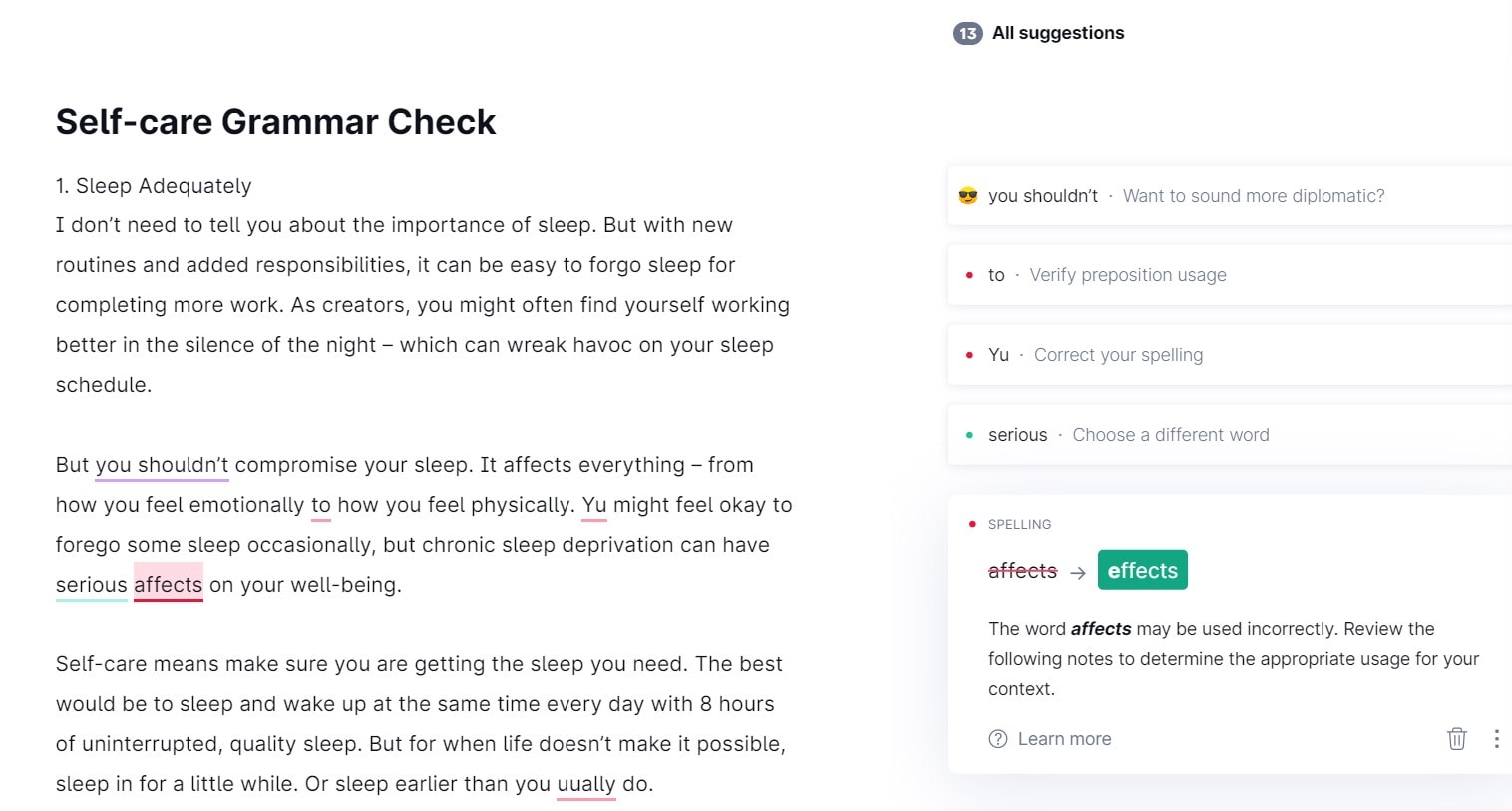
Well-written content is grammatically correct, and information is concise and easy to understand. Use simple and easy language; avoid using difficult idioms and jargon. Use bullet points and headings for more readability.
2. Unique and Updated Content
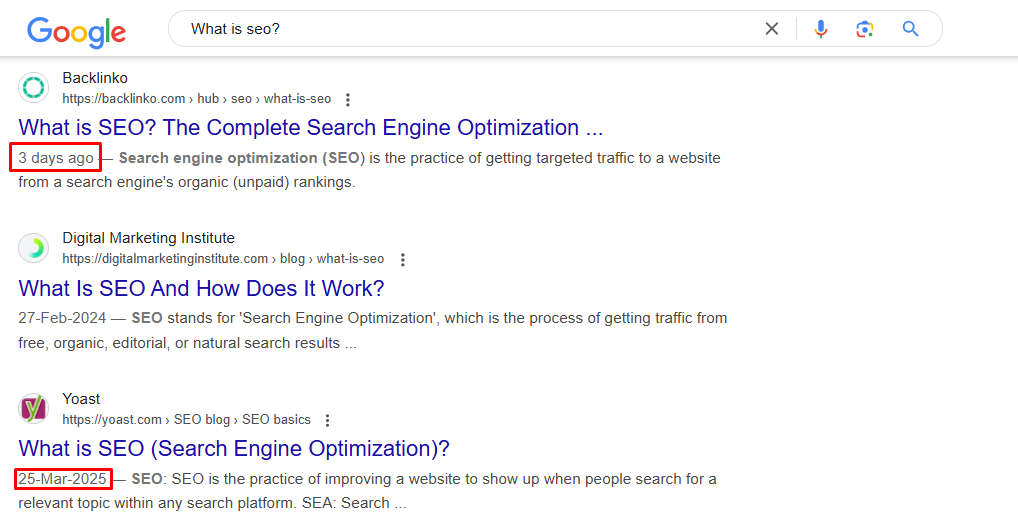
Present the information in a way that impresses the audience. Share your experience and insights with the audience so they can also relate to it. Share updated content that fills the knowledge gaps and makes the content stand out. This helps to maintain audience interest, so they visit frequently.
3. Attractive Content
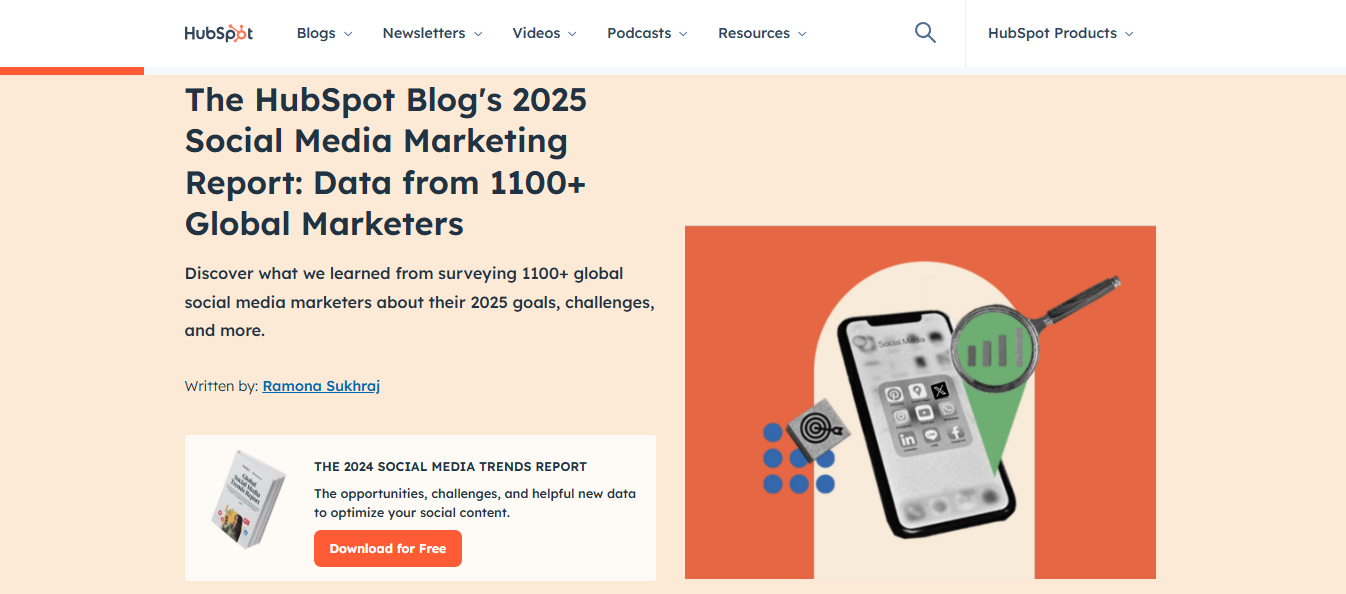
Good content attracts the audience and engages them in the blog or article. Effective content evokes emotions and curiosity or inspires actions. Use the technique of storytelling, which engages the reader, adds a human touch, and makes it relatable. Share customers’ success stories and real industry insights that hook readers.
4. Add Value
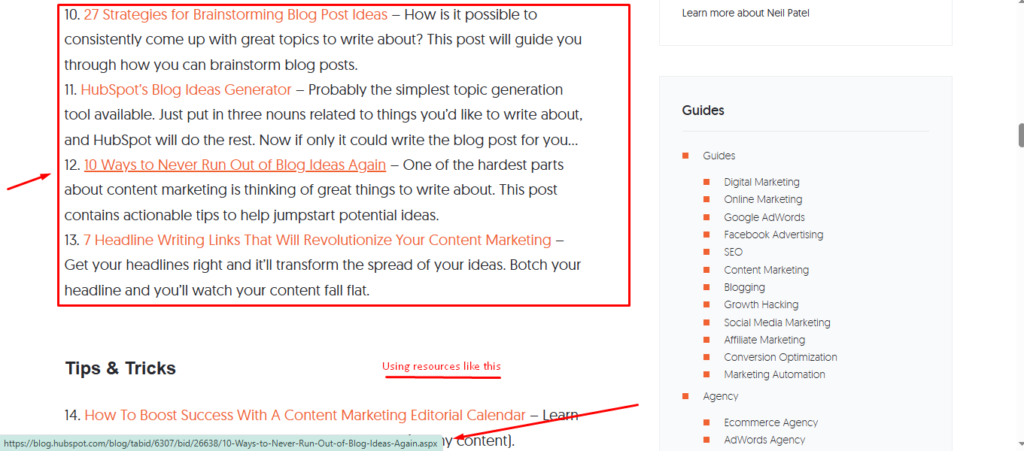
Content that fulfills its purpose delivers solutions while responding to inquiries and delivering useful benefits to end users. Resources should be enhanced through new content that provides a more profound understanding and distinct points of view. Resources that help users become more trustworthy thus lead to enhanced customer loyalty.
5. Share Trust
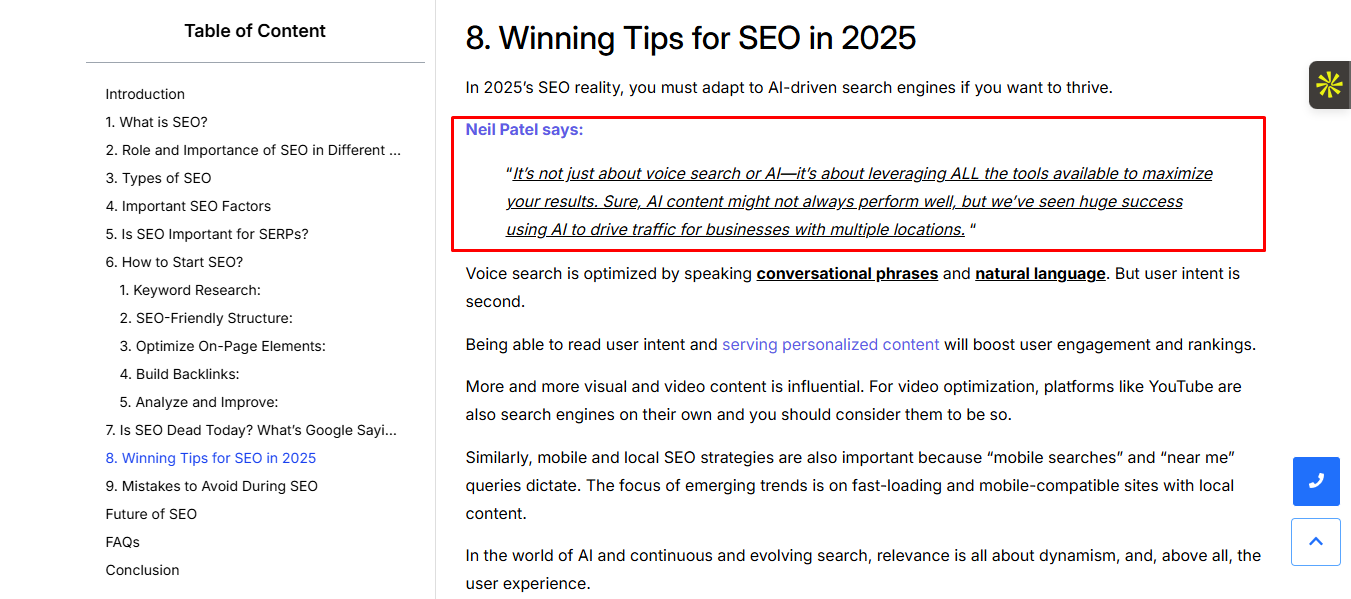
People establish credibility by presenting factual data alongside expert advice and original studies, and they prove their statements with references, along with customer endorsements. The reliability of content brings professional excellence while making a field more authoritative.
6. SEO-Optimized Content
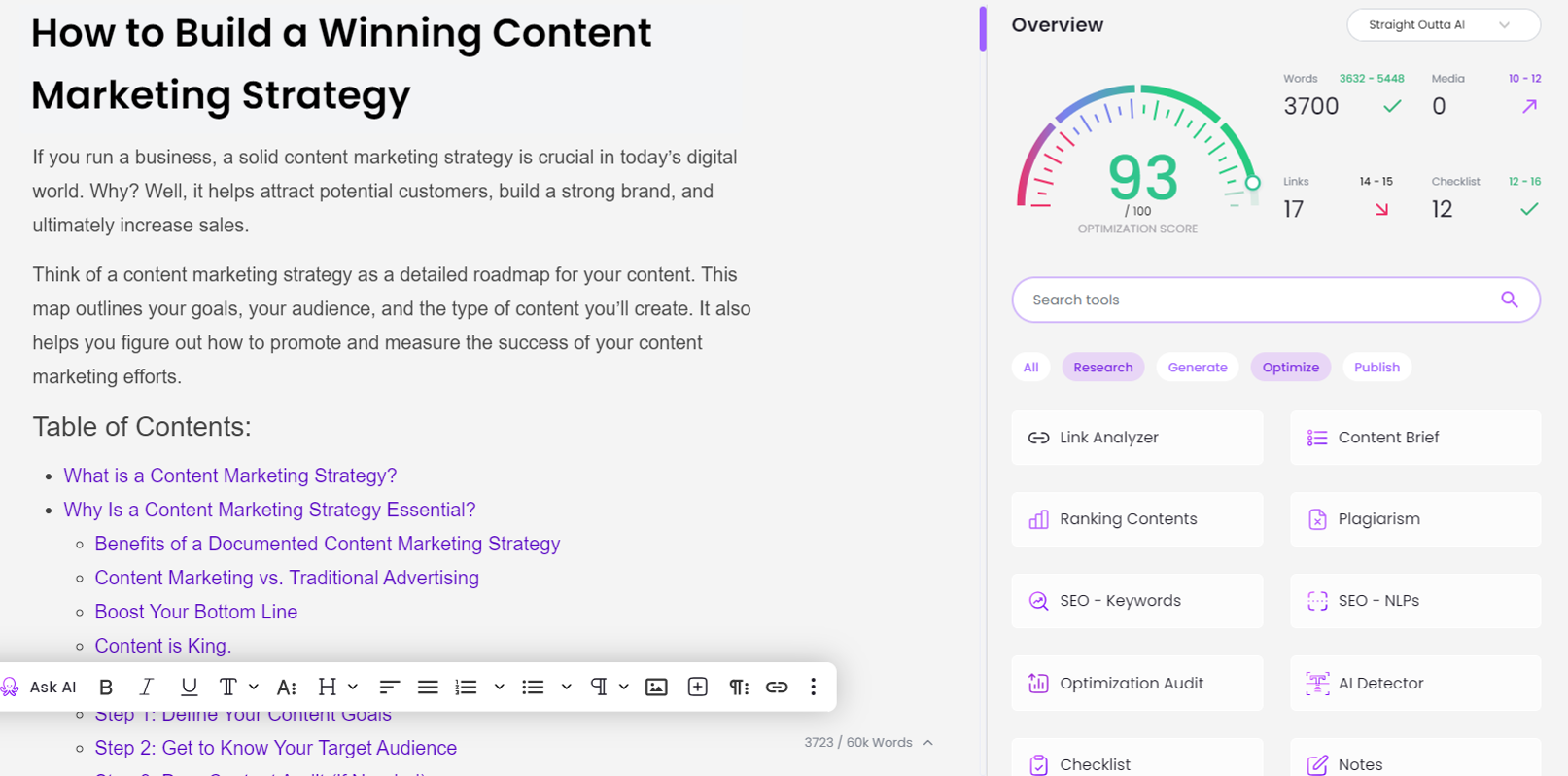
The content needs optimization through SEO practices to connect with the appropriate audiences. The combination of appropriate keywords and metadata, and linking systems results in better search engine results page (SERP) rankings. Any content that remains accessible for discovery functions as a basis for establishing authority within a specific niche.
7. Understand Audience
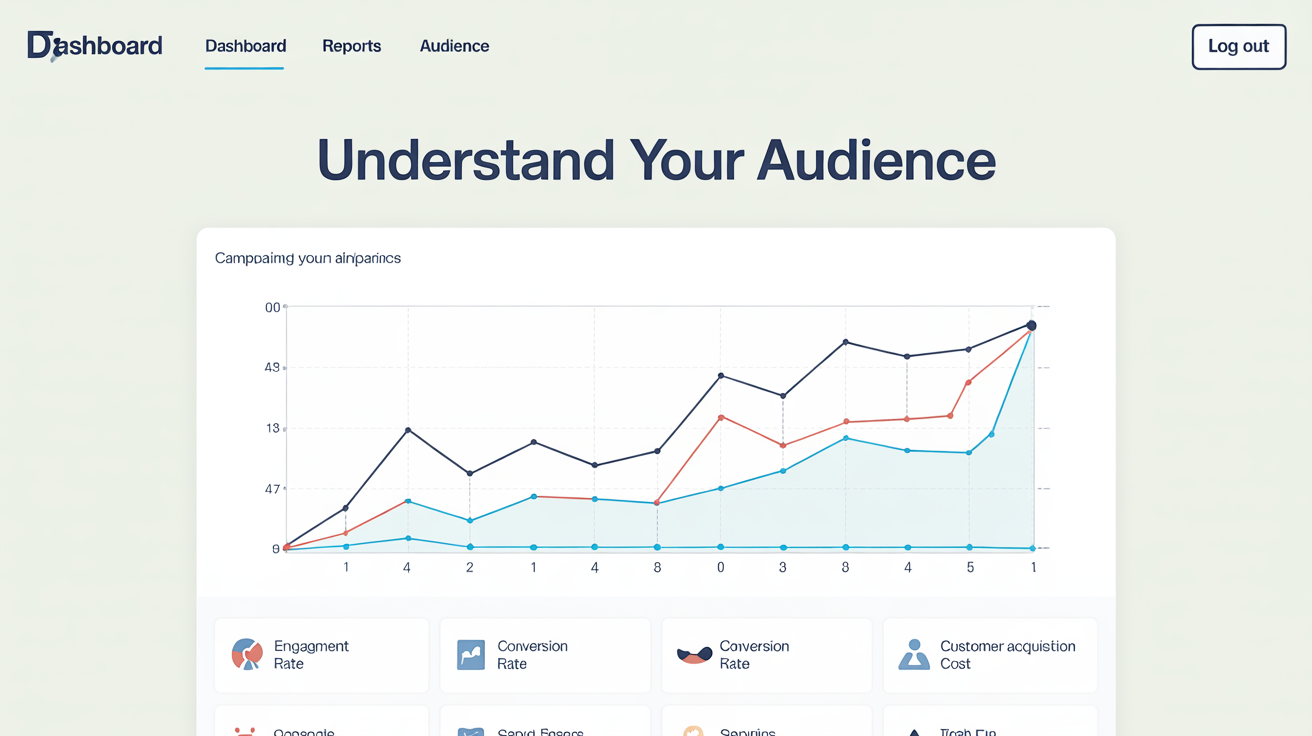
Organizations need to understand their market audience to produce meaningful content. During research, creators learn how to develop material that addresses their users’ specific needs and addresses their understood problems and preferred approaches. Content that connects with readers tends to receive both appreciation and increased sharing among audience members.
AI VS Human-Written Content

Three key AI content generation tools, ChatGPT, Jasper, and Copy.ai, enable businesses to access sophisticated and easier-to-use content generation technology. Companies use artificial intelligence to create content rapidly and decrease expenses while organizing their content approach.
AI Content Quality
The automation systems remain effective in creating many forms of written content while suggesting appropriate keywords and making documents easy to read. Although AI tools produce content swiftly and organize content well, they tend to lack the ability to understand context and show emotions, as well as generate original thoughts.
Limitations include:
- Repetitive phrasing and generic tone
- Lack of deep expertise or first-hand experience
- Risk of factual inaccuracies or outdated information
Human-Written Content
Human-written content adds authenticity, voice, and creative abilities to produce content. Their storytelling ability and emotional touch, together with their personality, make content that deeply engages readers.
Why human input matters:
- People naturally comprehend subtleties and comical elements together with the perception of readership objectives.
- They write according to their audience’s needs and emotions by knowing what the audience wants; AI can’t understand emotions.
- Human writers possess the ability to verify content statements while also generating custom content that suits specific cultural preferences.
- Human writers create trustworthy content that represents a crucial Google ranking indicator as described in the E-E-A-T framework
- Organizations should bring AI together with human intervention since technology works best for efficiency, while people maintain depth and originality alongside brand consistency.
Essential Factors for Content Creation
These are the essential factors that help to write and generate effective content that engages the audience and ranks high on Google. Content creation is a great process to explain information and a brand’s visibility online.
Content Creation Factors
The following essential components should be considered for producing continuously high-quality content:
- Peak your readers’ engagement levels through storytelling methods that establish emotional bonds and maintain their attention. It enhances the memorability of your main points.
- A content match between tone and brand identity will work for both the audience and their preferred communication style, which can be formal, conversational, educational, or persuasive.
- The content receives validation through images, infographics, and embedded videos. The combination of these elements strengthens UX performance, and whenever executed well, they produce SEO advantages.
- Every piece of content should match the user’s search intent, which falls under informational, navigational, and transactional categories.
Content Writing Tips
Here are the essential Content writing tips every writer should know:
- Use hooks at the start of the sentence to engage the audience.
- Write catchy headlines that are relevant and attract the audience.
- When you write the content, ask yourself a question. “Why do I write this?” “Who reads my content?”
- Stay on the topic; don’t discuss another topic. Select one topic to discuss before creating content.
- Include industry experts’ thoughts, research, and statistical data for more trust that supports credibility and supports your claims.
- SEO-optimizes your content so that it is easily discoverable for search engines.
- Use the brand’s passionate voice, which provides information and entertainment to the audience. It turns the audience into customers.
- Focus on providing value, except for promotion pitches.
- Use visual data such as images, videos, and infographics; this enhances engagement and breaks up the text.
- Use proper formatting and structure to make content scannable.
- Before publishing the content, ensure it is free from grammatical errors and uses sound phrases.
Strong content writing skills are a combination of storytelling, technical skills, strategic thinking, and creativity. Balance the keywords with natural language and authentic insight.
AI Writing Tools and Their Role in Content Optimization
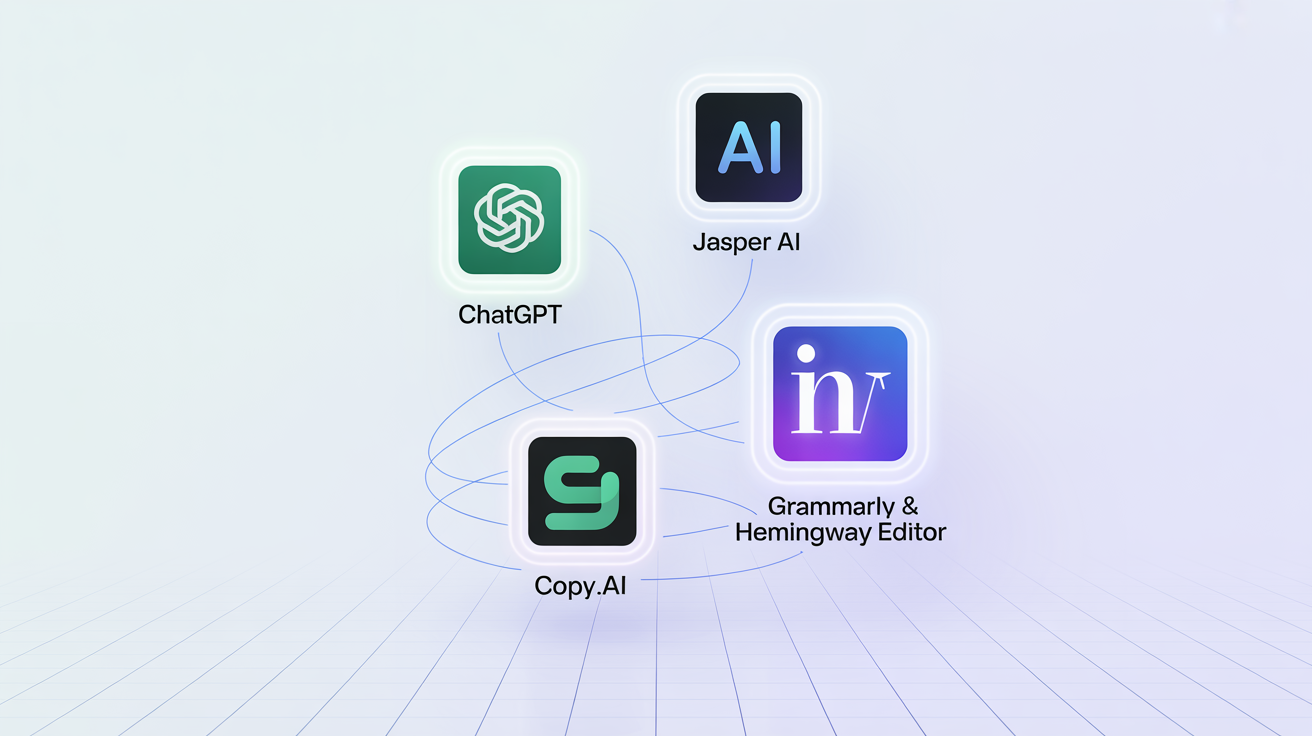
Digital marketing needs AI content tools to become essential in its operations. Some widely used platforms include:
- ChatGPT: Delivers its best performance when creating ideas, constructing outlines, and generating conversational content.
- Jasper AI: Known for marketing-focused copy and long-form content.
- Copy.ai: This is great for ad copy, product descriptions, and short-form writing.
- Grammarly & Hemingway Editor: Useful for grammar checks and readability improvement.
These tools help cut down work time while providing crucial recommendations for bettering SEO and tone, and flow.
AI tools can’t replace humans; they only assist them. AI tools have no emotions, storytelling ability, deep analysis, or thought processes, so sometimes they give outdated data.
Best Practices to Use AI Tools
- You can use AI tools to generate keyword ideas, outlines, FAQs, and summaries, which is where AI shines.
- Don’t write whole blog posts from AI tools because Google doesn’t rank AI-generated content.
- Never publish raw AI content; first, refine, fact-check, and convert it into human-written content.
- Follow the Google guidelines on AI-generated content.
Use AI tools to increase productivity and maintain consistency without compromising authenticity.
Google Updates About Quality Content
In the past years, Google has introduced many updates to improve the search results and content quality across the web.
- The first update about content quality comes about E-A-T to produce high-quality and valuable content. It indicates expertise, authority, and trustworthiness.
- With more development, Google added the E, which transformed E-E-A-T, which now stands for Expertise, Experience, Authority, and Trustworthiness. This emphasized the importance of first-hand experience in content, how-to guides, and review writing. In simple terms, it means writing content for people, not for search engines.
- On February 8, 2023, Google released updates on AI-generated content, which indicate that if a user publishes AI content that can’t provide value, it will be marked as spam and not rank on search engines. Use AI to generate helpful, valuable, and first-person content.
- This algorithm will continue in 2025 and will focus on high-quality content. This algorithm now prioritizes content that provides comprehensive answers to user queries. According to research in 2025, searcher engagement has risen as a ranking factor from 11% to 12%.
Staying Updated on Google’s E-E-A-T Guidelines
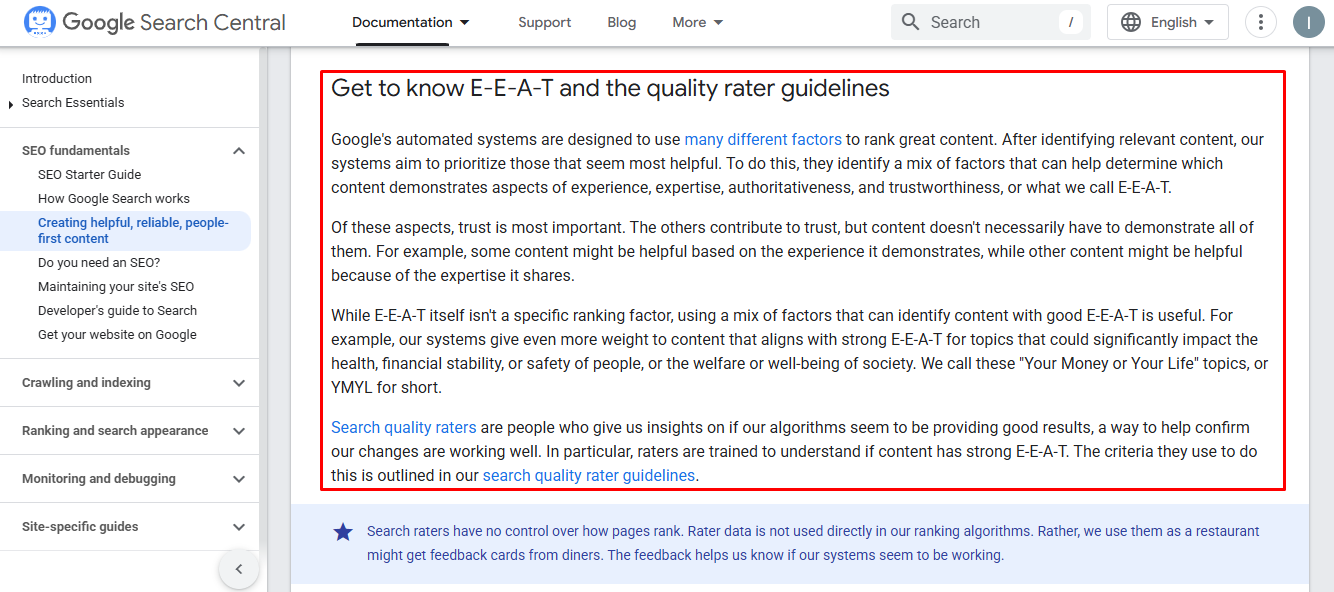
Google’s E-E-A-T framework is short for Experience, Expertise, Authority, and Trustworthiness. To reach E-E-A-T on your post:
- The showcase author bios and credentials.
- Include first-hand experience when relevant.
- Cite reliable sources and data.
- Build link building from authoritative domains.
- Keep your website current and technologically up-to-date.
Types of Website Content that Rank Well
1. Blog Posts and Articles
Ongoing blogs that contain useful knowledge can make your website the authority when it comes to your area.
2. Evergreen Content
Content that is relevant at all times remains fruitful for long-term traffic after the publication.
3. Pillar Pages and Topic Clusters
Detailed pages that provide central points for certain topics and connect passing to related subtopics strengthen the web page structure and search engine optimization.
4. Video Content
Interesting videos will keep viewers on your site longer and cater to those who learn from watching, resulting in increased engagement.
5. Infographics
A visual way to present your data or concept that is highly shareable & will get you backlinks.
6. Interactive Content
Quizzes, polls, and these factors, by incorporating interactive tools, may enhance engagement levels with the user and your time on the site.
7. User-Generated Content (UGC)
User reviews, testimonials, or community forums can create trust and new content.
Frequently Asked Questions
1. How to Write High-Quality Content?
To write high-quality content:
- Know Your Audience: Know what your audience’s requirements, interests, and pain areas are.
- Verify Research: Apply reliable sources, facts, and current information.
- Be Direct and to the Point: No useless words; be clear, straightforward, and plain.
- Rephrase the following sentence. Use the same language as the original sentence.
- Boost SEO: Naturally use keywords, link to other internal & external websites, and arrange with headers.
- Use visuals: Include pictures, movies, or pie charts to make the articles fabulous.
- Correction and Proofreading: Edit and proofread to correct grammar and spelling for the final presentation to be polished.
2. What is quality content, and why is it important?
The content of quality is content that is:
- Useful and relevant to the reader
- Well-structured and easy to navigate
- Original and trustworthy
- Engaging and shareable
Why it matters:
- It helps to improve website rankings because Google prioritizes high-quality content.
- It creates trust and brand credibility.
- It decreases the bounce rate; people spend more time on the site.
- High-quality content generates organic traffic and converts it into customers.
3. What is the purpose of the content on the website?
Website content serves to:
- Tell visitors about your goods, sales, or skills
- Engage with users and keep them on your website
- Lead the user to a task (such as purchase or signup)
- Improve Search Visibility with SEO-written copy
- Represent Your Brand through your tone, mission, and values
4. How Does Content Enhance a Good Website?
Content enhances website quality by:
- Enhancing UX: Good, clear content helps navigation and decision-making.
- Showing Authority: Long, well-written content can establish topical authority.
- Optimizing SEO: Goodly handled content raises search engine prominence.
- Driving Engagement: Authentic content leads to more shares, comments, and links.
- Cutting Bounce Rates: Relevant content stops surfers from leaving right away.
5. How to Create a Website Content Strategy
A content strategy for a website should contain:
- Set Good Objectives— Identify what you wish (e.g., the traffic, conversions, leads).
- Know Your Audience—Develop a picture of who your buyer is.
- Analyze Content—Run a content audit and determine what is successful or unsuccessful.
- Keyword Research—Discover what your audience is looking for.
- Plan Content Types—Articles, product page, landing page, etc.
- Make a content calendar—predictable posting.
- Boost and Distribute—Email, social media, and SEO.
- Track and Measure—Have competence in Google Analytics to monitor performance.
6. How to Create a Website Content Outline
To create a content outline:
- Decide on the Goal—What is the content intended to do?
- Determine the target audience—write to match.
- Main Topics Selected—Based on keyword or interest of the audience.
- Subtopic Breakdown—Use H2s and H3s for a logical order.
- Key Bullet Ideas—Underline key points in support of the list.
- Plan CTAs (Calls to Action)—Decide where and how to prompt the user action.
- Add SEO icons—keywords, meta descriptions, and image alt text.
7. What is the Role of AI Content in Website Ranking?
AI content has joined the website performance trend:
- Boosts Content Production: Facilitates creating first sketches or ideas on short notice.
- Enhances Consistency: Keeps tone and voice constant on all pages.
- Has SEO options: Can import a selection of tags and references to interneeds.
- Needs Human Approval: To assure truthfulness, uniqueness, and emotional effect.
Conclusion
In this article, I’ll explore why high-quality content is more essential than keywords. Keywords are only used for the search intent of the user, but quality content builds trust and credibility and provides more depth to the user. Google says to write content for people, not search engines.
High-quality content includes proper research, visuals, infographics, and following Google E-E-A-T guidelines. AI content quality is low because it gives low quality; give it a human touch for emotional and trust-building. Focus on the content creation factors.


